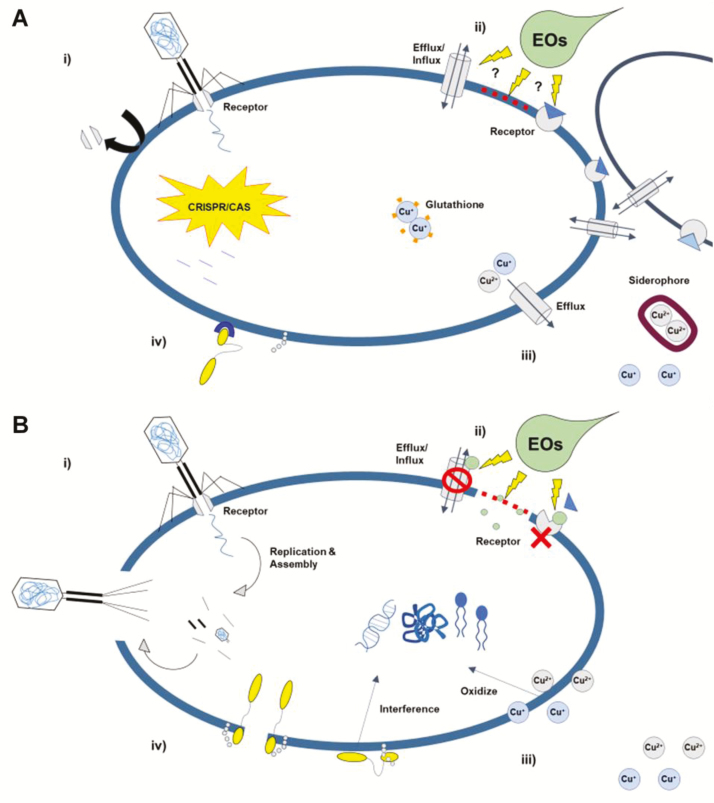Figure 1.
(A) Phage interact with specific receptors to inject DNA into the bacterial cell, causing viral proliferation and cell lysi (i). Essential oils (EOs) disrupt efflux/influx, membrane receptors and stability (ii). Copper disrupts bacterial lipids, proteins, and DNA through oxidization (iii). Bacteriocins cause cell wall lysis, disrupt the plasma membrane structure (pore formation), and interfere with DNA function (iv). (B) Bacterial resistance to phage is conferred through either blockage/removal of the receptor or cutting of phage DNA in the cell by CRISPR/CAS (i). Bacteria form aggregates to minimize cell surface exposure to EOs, thus preventing membrane associated disruptions (ii). Glutathione chelates Cu+, ATPase efflux system exports Cu+/Cu2+, and siderophores sequester Cu2+ to prevent it entering the cell (iii). Modifications of the cell wall and membrane affect fluidity and charge, impairing bacteriocin binding (iv).

